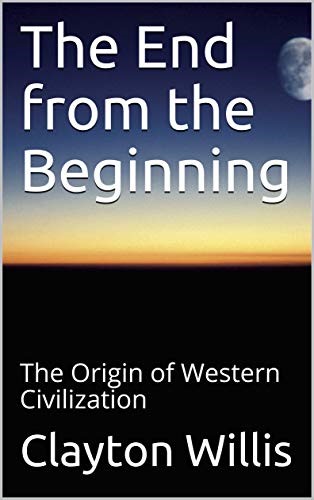Origin of Pantheon gods
The most well-known pantheon of “gods” are probably those of the Greeks with their names like Zeus, Hera, Poseidon, Athena, Hades, Nemesis or Hermes or the Roman pantheon of Jupiter, Juno, Minerva, Neptune, Mars, Apollo or Diana.
Did you ever wonder how such a conglomeration of so many “gods” came to be? I certainly have often wondered how such religions came to be.
Here is a startling fact: Everyone of these religions started out with a belief in one God!
George Rawlinson (23 November 1812 – 6 October 1902) was a 19th-century English scholar, historian, and Christian theologian.
His greatest work was published in the late 1880’s and 1890’s. That work is found today in many places including Amazon. It has been compiled as the huge (3,598 pages) The Great Empires of the Ancient East: Egypt, Phoenicia, The Kings of Israel and Judah, Babylon, Parthia, Chaldea, Assyria, Media, Persia, Sasanian Empire & The History of Herodotus.
There are shorter publications with each book containing the history of a single empire, if you’d prefer that format.
I used Rawlinson’s work extensively in my book The End from the Beginning (The Origin of Western Civilization).
Rawlinson shares the same “blind spot” as most Biblical and secular historians: Rawlinson invariably refers to all Israelites as “Jews” and thus misses the importance of the history of the rest of God’s chosen people and their role in the growth of the early church.
His work is truly phenomenal in its scope and authenticity. He provides the best explanation of how these multiple-god religions came to be.
In covering the religions of the ancient Empires Rawlinson extensively demonstrates in several places that the origin of all the major world religions was one with a belief in just one God. He explains how that transmogrified (to transmogrify – “to transform, especially in a surprising or magical manner”) into the religious pantheons of multiple “gods”.
Writing about the religion of Phoenicia, for instance, Rawlinson wrote:
These will show us that in the earliest times the religious sentiment of the Phoenicians acknowledged only a single deity—a single mighty power, which was supreme over the whole universe. The names by which they designated him were El, “great;” Ram or Rimmon, “high;” Baal, “Lord;” Melek or Molech, “King;” Eliun, “Supreme;” Adonai, “My Lord;” Bel-samin, “Lord of Heaven,” and the like.
Distinct deities could no more be intended by such names as these than by those under which God is spoken of in the Hebrew Scriptures, several of them identical with the Phoenician names—El or Elohim, “great;” Jehovah, “existing;” Adonai, “my Lord;” Shaddai, “strong;” El Eliun, “the supreme Great One.” [Genesis 14:18–20]
An astute observer of human nature, Rawlinson explains how that one God became many:
But this happy state of things did not—perhaps we may say, could not—in the early condition of the human intelligence, last long. Fallen man, left to himself, very soon corrupts his way upon the earth; his hands deal with wickedness; and, in a little while, “every imagination of the thoughts of his heart is only evil continually.” [Genesis 6:5]
When he becomes conscious to himself of sin, he ceases to be able to endure the thought of One Perfect Infinite Being, omnipotent, ever-present, who reads his heart, who is “about his path, and about his bed, and spies out all his ways.” [Psalm 139:1–4]
He instinctively catches at anything whereby he may be relieved from the intolerable burden of such a thought; and here the imperfection of language comes to his aid. As he has found it impossible to express in any one word all that is contained in his idea of the Divine Being, he has been forced to give Him many names, each of them originally expressive of some one of that Being’s attributes.
But in course of time these words have lost their force—their meaning has been forgotten—and they have come to be mere proper names, designative but not significative.
Here is material for the perverted imagination to work upon. A separate being is imagined answering to each of the names; and so the nomina become numina. Many gods are substituted for one; and the idea of God is instantly lowered.
To Rawlinson’s conclusion I would add this: If there is only one God, there can only be one “high priest” for that God – at least only one in each location. If there are 10 “gods” then there can be 10 “high priests” each with his own entourage and supplicants providing employment and prestige for a whole religious cast of characters.
That is human nature, which has not changed over the centuries. That facet of human nature is demonstrated by comparing today’s culture with the history of these empires. It is completely natural for certain individuals to seek power over others and to do whatever is necessary to gain that power and then sustain it.
This, to me anyway, helps explain the proliferation of Christian denominations and sects. Though mostly they profess a belief in the one, omnipotent God and most acknowledge the role of Jesus in the plan of salvation, the impetus to gather followers leads to splits and schisms. That facet of human nature that led to the belief in a pantheon of “gods”, the gathering of an entourage and supplicants to provide employment and prestige remains attractive to many.

